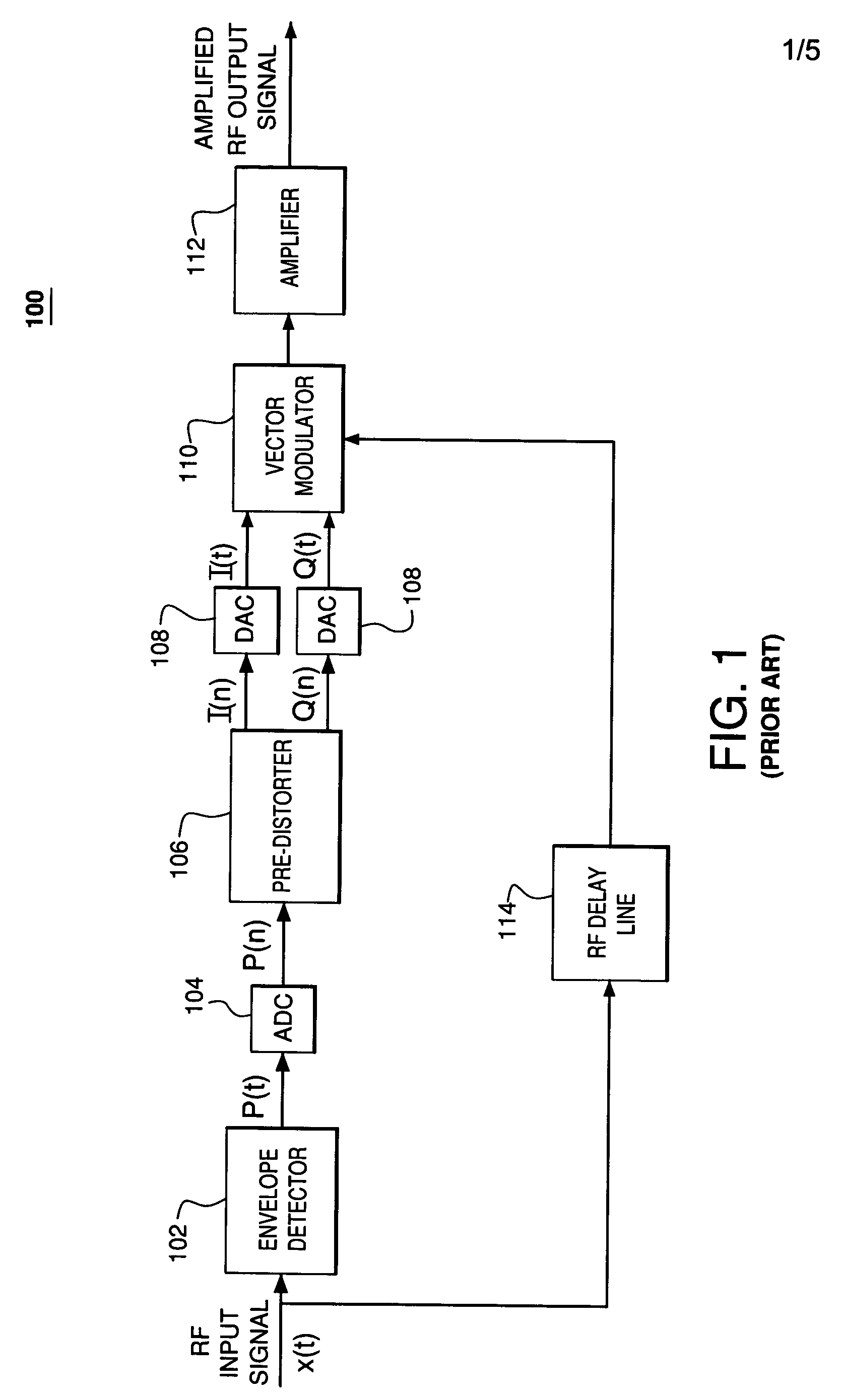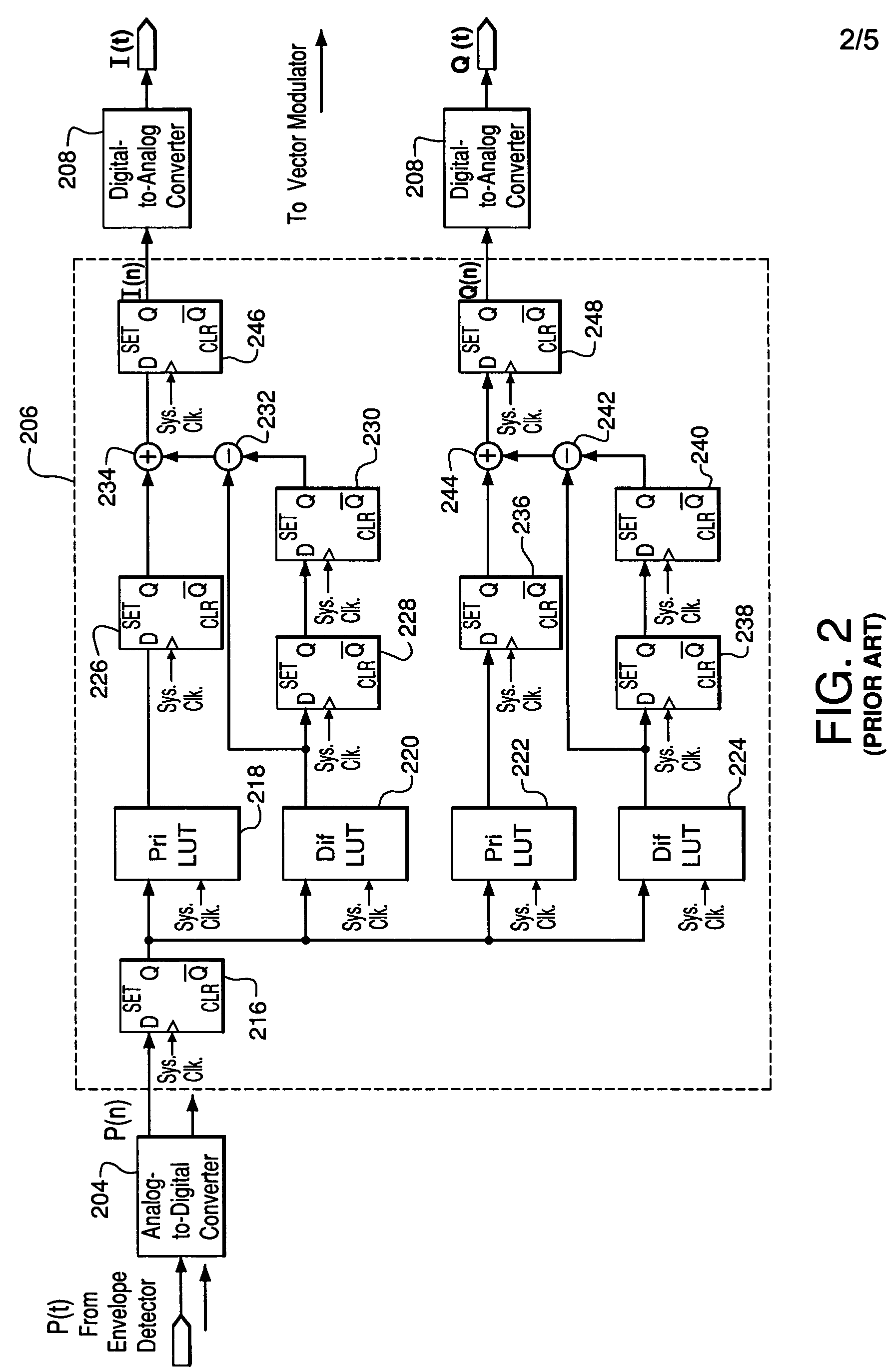Amplifier pre-distortion processing based on composite look-up tables
- Summary
- Abstract
- Description
- Claims
- Application Information
AI Technical Summary
Problems solved by technology
Method used
Image
Examples
Embodiment Construction
[0012]FIG. 2 shows a block diagram of prior art pre-distorter 206, which can be used to implement the pre-distorter of FIG. 1. In particular, FIG. 2 shows ADC 204 (similar to ADC 104 of FIG. 1) receiving an analog voltage signal p(t) generated by an envelope detector (similar to envelope detector 102 of FIG. 1) and generating a digital signal p(n) corresponding to that received voltage and representative of the instantaneous RF envelope power level. The digital power signal p(n) is applied to pre-distorter 206, which generates two digital pre-distortion components I(n) and Q(n), each of which is applied to a DAC 208 (similar to DACs 108 of FIG. 1) to generate analog pre-distortion signals I(t) and Q(t) that are applied to a vector modulator (similar to vector modulator 110 of FIG. 1) to generate a pre-distorted signal for amplification by an amplifier (similar to amplifier 112 of FIG. 1).
[0013] Pre-distorter 206 of FIG. 2 may be implemented in a field-programmable gate array (FPGA)...
PUM
 Login to View More
Login to View More Abstract
Description
Claims
Application Information
 Login to View More
Login to View More - R&D Engineer
- R&D Manager
- IP Professional
- Industry Leading Data Capabilities
- Powerful AI technology
- Patent DNA Extraction
Browse by: Latest US Patents, China's latest patents, Technical Efficacy Thesaurus, Application Domain, Technology Topic, Popular Technical Reports.
© 2024 PatSnap. All rights reserved.Legal|Privacy policy|Modern Slavery Act Transparency Statement|Sitemap|About US| Contact US: help@patsnap.com










